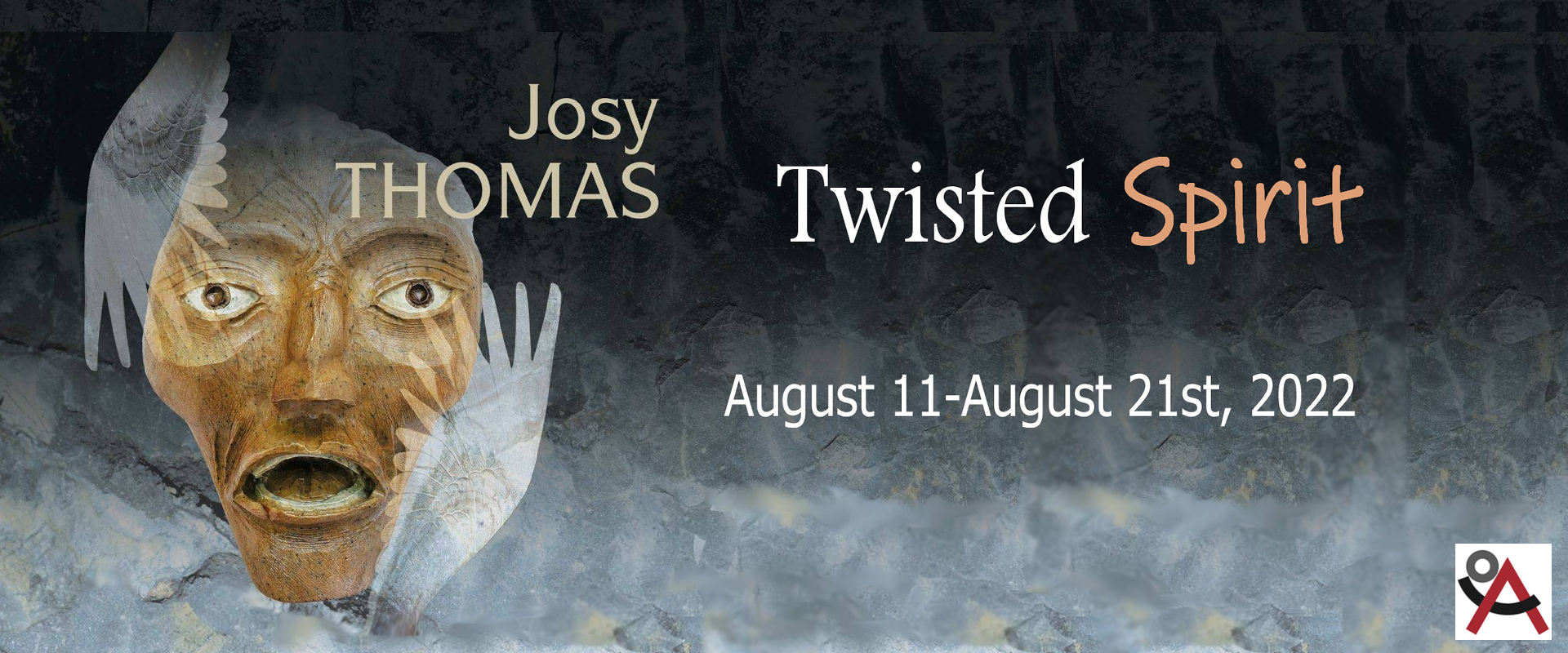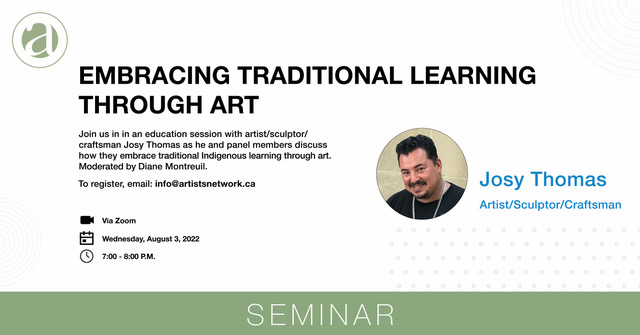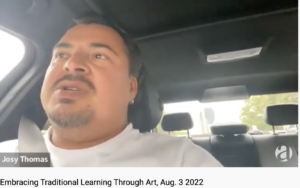
Twisted Spirit
Solo Show – Josy Thomas
August 10 – 21, 2022
OPENING RECEPTION: August 11: 6 – 8 PM
Join us IN-PERSON for the Opening Reception at the Leslie Grove Gallery. COVID-19 Protocols: following provincial and city guidelines
ABOUT THE SHOW
Josy Thomas learned early on the power and importance of the Longhouse Teachings. His grandfather, Jacob Thomas, started his training at age 6 until he passed away when Josy was 17. In 1998 he graduated from OCAD with a Masters in Fine Art. He has participated in a number of shows in the US and Canada. His latest show, Twisted Spirit, is a personal view of his life and expresses his feelings through his unique artistic voice. The show opened in the Musée Maison Amérindienne and will be showing in Toronto, at the Leslie Grove, in August.
ARTIST TALK: Embracing Traditional Learning through Art
CHECK IT OUT
SPEAKER: Josy Thomas MODERATOR: Diane Montreuil
BIO:
Growing up with his grandfather as his main role model, Josy Thomas learned early on the power of the Longhouse Teachings. A member of the Wooden False Face society and Faithkeeper for the Longhouse, Chief Jakob E.Thomas made sure that his grandson would carry on the Onkwehonwe traditions and pick up his role as Faithkeeper for their Longhouse when the time came. As a young boy, Josy, spent much of his time watching his grandfather carve traditional masks for ceremonies. As he sat perched on the edge of a tree stump, amidst sawdust and woodchips, he listened as his grandfather shared wisdom and traditional Teachings from the Longhouse; he spoke about life, their culture and their languages. Josy learned young what was expected of him as a Onkwehonwe man and the grandson of a traditional Chief and Faithkeeper. At age 9, under the watchful eye and gentle guidance of his grandfather, Josy carved his first traditional mask out of soap stone. He was made to understand the difference between the masks he carved out of stone and the medicine masks he would be called upon to carve for members of the Society. Josy speaks with emotion of that time spent in his grandfather’s workshop and how desperately he wanted to be as good a carver as his grandfather. At times, when he could not faithfully reproduce the images in his mind’s eye, he felt very frustrated and discouraged but grandfather was a kind and patient mentor and with his gentle encouragement Josy would try again. “Don’t carve how I do, carve your own way, make it look the way you want it to look, take the time it takes, don’t rush it.”
Within these few words were held the essential truths that still guide Josy on his life’s path today. By his 12th birthday Josy had already sold his first piece; for 6 years his carvings were in high demand in galleries all over Ontario and Québec like Gallery Indigena, Bay of Spirits and the Woodland cultural Centre. In 1998, Josy’s world was shaken to the core, the passing of his beloved grandfather left him questioning the validity of his life’s work. The old traditional themes no longer spoke to him and Josy felt adrift as he came to the realization that there was nobody there to help him find his way in a strange new world that simply didn’t seem to care if he lived or died. Although he continued to carve with the same technical proficiency the passion and solace he had previously experienced evaded him. In 2006 he graduated from the Ontario College of Art but even that success did not satisfy him, he felt lost and alone.
It was the sudden death of his cousin that unleashed his voice and re-ignited his profound passion for carving. As Josy wrestled with grief and loss once more, he turned to carving to express the intense turmoil and sadness he felt. His work has evolved to a new expression of the spirit of the Haudenosaunee culture from the Longhouse to the Wampum Belts, so iconic of his heritage. As he prepared work for the Red Earth, Heard Guild Museum the Santa Fe Indigenous art shows, his work has focused on the expression of the paradox of being an Indigenous person in the 21st century. His work lays bare the constant tension he experiences trying to remain true to his traditional roles and responsibilities, as taught by his grandfather, and meet the expectations of a world that does not truly understand him or his world view. His breakthrough was a piece he calls Wisdom that depicts a man who is transformed by the power of ceremony. In this piece Jose came to terms with who he is meant to be and this piece launched him into the Twisted Spirit series, a collection of stone masks that illustrate the feeling of being torn between the two worlds he lives in. He participated in shows at the Georgina Art Gallery and Centre, Gallery DePoivre and Artspace 160.
The strength of presence emitted by the Twisted Spirit series is palpable. In these piece, Josy successfully juxtaposed the tremendous indomitable power of the Indigenous spirit with the intense feeling that your soul is lost. He describes it as a kind of tug-a-war with your spirit and mind; torn between the demands of survival in the 21st century and the pull of Indigenous tradition and culture that have sustained Indigenous people for millennia. This complex paradox is adroitly expressed in Josy’s stone carvings; he lays bare the soul of Indigenous men and shows that strength and tenderness are not mutually exclusive concepts.
As a young artist, Josy Thomas told ancient stories of the First People of Turtle Island; as a man in his prime, he draws from traditional themes and symbols to bring to life the stories of contemporary Indigenous people. The raw power of his stone carvings demand attention but it is the soulful expression of the Indigenous heart reflected in his that holds the viewer and compels the viewer to understand the struggle between power and vulnerability that is the constant companion of 21 st century Indigenous people universally. Josy’s current work has transcended the personal and moved towards expressing the importance of Wampum to the Haudenosaunee people. In his latest series of work, Josy dispels the myths that have diminished the understanding of what Wampum Belts represent to Haudenosaunee people and is expressing in wood and stone the very core of the agreements these belts represent. The viewer will not see a depiction of the Wampum Belts but the meaning behind those agreements, the circumstances that made these agreement necessary and why they are, to this day, at the centre of a repatriation project.


